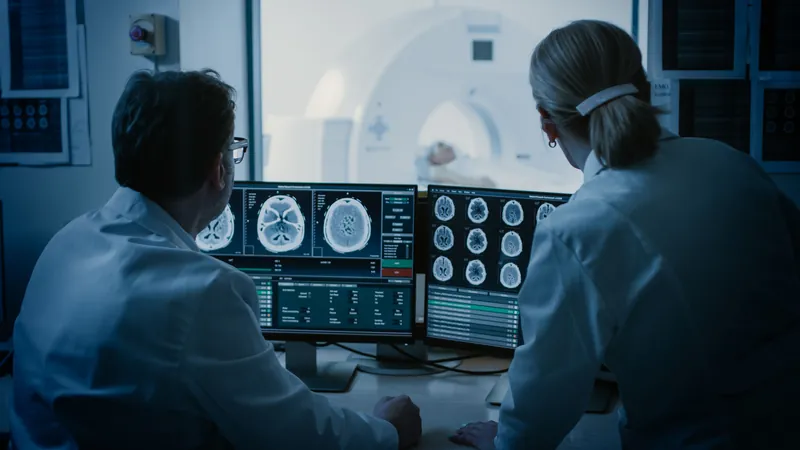
Revolutionary CT Scan Method Could Save Lives by Predicting Severe Postpartum Hemorrhage Risk
2025-08-26
Author: Daniel
In a groundbreaking study, researchers from Kumamoto University have unveiled a revolutionary method using CT imaging to predict the risk of severe postpartum hemorrhage (PPH) in women, potentially changing the game for maternal healthcare.
What is PRACE?
The team identified a specific pattern called Postpartum hemorrhage, Resistance to treatment, and Arterial Contrast Extravasation (PRACE) in dynamic CT scans. Alarmingly, nearly one in three patients displayed this finding, which correlates strongly with the need for emergency interventions like uterine artery embolization (UAE). Women showing PRACE were over three times more likely to experience complications requiring emergency care.
Dr. Eiji Kondoh, a professor at Kumamoto University, highlighted the significance of PRACE in their study, stating, "This is a game-changer in how we assess and respond to critical postpartum bleeding. By utilizing dynamic CT imaging, we can swiftly detect early signs of life-threatening bleeding and take immediate action to save lives."
Study Breakdown
The comprehensive study was retrospective, evaluating PPH cases documented in 2021 from 43 tertiary medical facilities. It focused on patients transferred to these centers due to severe PPH. To ensure accuracy, various complications like placental abruption and uterine rupture were excluded from analysis.
Researchers meticulously gathered data on various risk factors, including maternal age, previous pregnancies, the presence of fibroids, and the type of delivery. They particularly looked at fibrinogen levels—crucial in coagulation—to assess the risk of severe outcomes.
Insights from CT Imaging
Through meticulous evaluation of CT images by a trio of specialists, the diagnosis of PRACE was established based on the detection of early-phase contrast agents within the uterine cavity. A total of 352 patients were analyzed, with a median age of 33. Strikingly, 60% were first-time mothers, and a noteworthy 37.9% had used in vitro fertilization.
Dramatic Statistics
Among the findings, 77.3% of the women required blood transfusions, while 29.8% underwent UAE. Notably, CT scans were performed on 58.2% of patients, revealing that 32.2% exhibited the PRACE pattern. Significantly, the PRACE group experienced much higher blood loss, averaging 3,455 mL compared to 2,500 mL in non-PRACE cases.
Additionally, the presence of dangerously low fibrinogen levels (below 150 mg/dL) was recorded at 57.9% in PRACE patients versus only 23.3% in the non-PRACE group.
What’s Next?
The study underscores the critical association between detecting PRACE on CT scans and the probability of severe PPH. The researchers advocate for future studies aimed at standardizing imaging protocols to be integrated into clinical decision-making, thereby optimizing maternal outcomes.
As healthcare evolves, the introduction of this CT scan method promises to enhance the management of severe postpartum bleedings, potentially saving countless lives and changing maternal healthcare as we know it.


 Brasil (PT)
Brasil (PT)
 Canada (EN)
Canada (EN)
 Chile (ES)
Chile (ES)
 Česko (CS)
Česko (CS)
 대한민국 (KO)
대한민국 (KO)
 España (ES)
España (ES)
 France (FR)
France (FR)
 Hong Kong (EN)
Hong Kong (EN)
 Italia (IT)
Italia (IT)
 日本 (JA)
日本 (JA)
 Magyarország (HU)
Magyarország (HU)
 Norge (NO)
Norge (NO)
 Polska (PL)
Polska (PL)
 Schweiz (DE)
Schweiz (DE)
 Singapore (EN)
Singapore (EN)
 Sverige (SV)
Sverige (SV)
 Suomi (FI)
Suomi (FI)
 Türkiye (TR)
Türkiye (TR)
 الإمارات العربية المتحدة (AR)
الإمارات العربية المتحدة (AR)